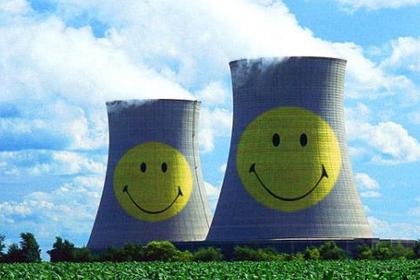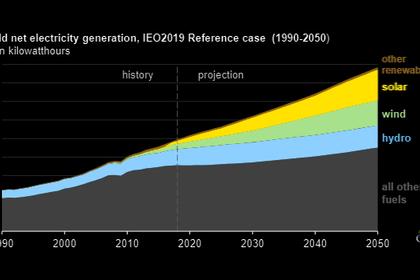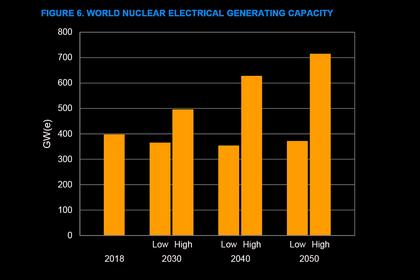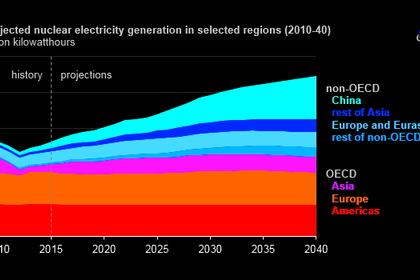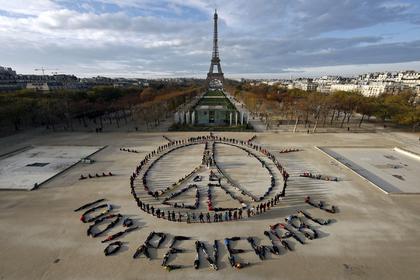
CLIMATE, ENERGY CHANGES
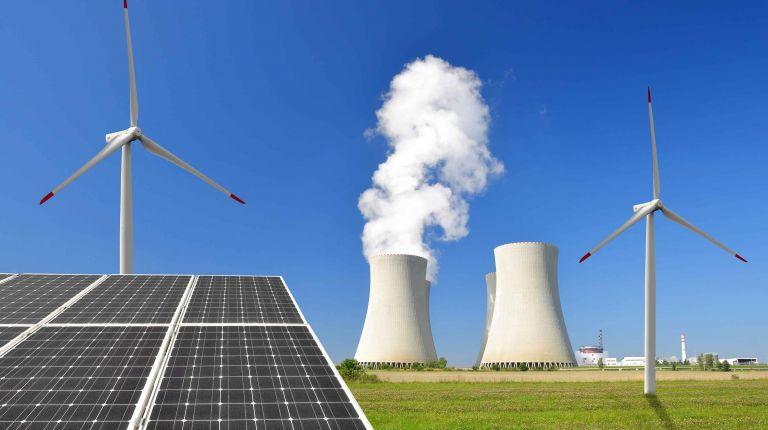
WNN - Global efforts to tackle climate change are futile as long as opposition to nuclear power persists, delegates heard at the opening session of the International Atomic Energy Agency's International Conference on Climate Change and the Role of Nuclear Power. It is the Vienna-based agency's first conference on this topic.
Some 550 participants representing 79 countries and 18 international organisations are taking part in the weeklong event, which the IAEA is hosting in cooperation with the Organisation for Economic Cooperation and Development's Nuclear Energy Agency (OECD/NEA).
Conference President Mikhail Chudakov, IAEA deputy director general and head of its Department of Nuclear Energy, said the conference "may be a first but the issue is not". Nuclear power has been "proving for decades" it can meet the twin challenges of climate change and sustainable development, he said, stressing that the conference will be a discussion "based on science and facts", look into how the deployment of nuclear power plants can be accelerated, and examine how nuclear reactors and renewable energy units can work together in "hybrid energy systems".
Disconnect
Fatih Birol, executive director of the International Energy Agency (IEA), said in a video message broadcast during the opening session, that the Paris-based organisation has "all the energy data at its fingertips" which led to its decision to produce a report on nuclear power this year.
"Global energy demand last year increased the strongest in the last 10 years - about 2.3% - and, even more importantly, electricity demand increased even two times more than energy demand. This is an on-going trend and we expect this trend to continue and the growth of electricity is very pertinent and much higher than energy demand, and as such we believe electricity is the future," he said.
"But in 2018 despite the growth in renewable energy - in solar, wind and others - we saw last year that global emissions increased and reached a record high. As such, the key message is that there is a growing and dangerous disconnect between the climate ambitions - the reports, the meetings and government intentions - and what is happening in real life. There have been more and more reports, stronger ambitions, more speeches, and we have seen that emissions are still increasing. Therefore, we believe very strongly at the IEA that we have to look at all clean energy technologies and to make the most of those options. Renewable energy - solar and wind - are definitely important parts of this picture, but we also think that nuclear power, carbon capture, utilisation and storage, and other clean energy technologies are important."
It was in this context, he said, that in May the IEA produced a report on nuclear energy and its importance in tackling climate change - Nuclear power in a clean energy system.
"Our numbers show that today nuclear power is the second largest clean electricity source, following all other renewables put together and that in the most advanced economies it is number 1 - 18% of total electricity generation. But when we look at the future we have to be worried, from the nuclear point of view but also from a CO2 emissions point of view. The nuclear fleet around the world is aging and we don't see major new activity in most of the developed countries, and even the lifetime extensions are becoming a major challenge. Our numbers show that without the right policies of advanced economies, then this 18% in the total electricity generation will go down sharply to 6% and, as such, reaching our climate targets will be even more difficult," he said.
"We think there is a role for governments, those governments especially who take climate change and electricity security seriously, to provide support for the existing power plants, providing the framework conditions for lifetime extensions, and also for all countries around the world to look at new technologies, such as SMRs, which are very promising technologies, and they can be of great help for developed and developing countries in meeting their growing electricity demand.
"We believe the challenge of climate change is a great one, a difficult one, especially looking at the numbers today for CO2 emissions. In the electricity sector, we need all technologies to be part of the game. Some of us favour one and some another but we do not have the luxury to select our favourite technologies," he said.
It is time, he said, not for egos but to reduce CO2 emissions by bringing nuclear power together with other clean technologies.
Low carbon
Cornel Feruta, IAEA acting director general, noted that nuclear power plants emit practically no greenhouse gas emissions nor air pollutants during their operation and that, over their life cycle, are the second-lowest emitting source of electricity, after hydropower. Currently, 30 countries operate 449 nuclear power reactors worldwide, generating 10% of the world's electricity and one-third of all low-carbon electricity, he added. In terms of emissions avoidance, that's the equivalent of taking 400 million cars off the road every year, he said.
According to the IAEA, around 70% of the world's electricity currently comes from burning fossil fuels but by 2050 around 80% of all electricity will need to be low carbon to meet the Paris Agreement goal of limiting the increase in global temperatures above pre-industrial levels to well below 2 degrees Celsius.
"Making that transition will be a major challenge," Feruta said. "It is difficult to see how the goal of reducing greenhouse gas emissions can be achieved without a significant increase in the use of nuclear power in the coming decades." Advances being made in several countries concerning the final disposal of high-level radioactive waste "may help to alleviate" public concerns about the long-term sustainability of nuclear power", he added.
The right approach
William Magwood, director general of the NEA, said that "finding the right approach" to long-term, economic and reliable electricity supply is the central challenge to the decarbonistion of the future global economy.
"A vision of the future that incorporates variable renewable energy sources and cost-effective, advanced nuclear energy in a balance based on economic reality is one path to success," he said.
Climate change and sustainable development did not need to be "an either/or choice", he said. The "single most important issue" rather, is "what is the right mix that will enable us to be successful. Take any technology off the table and we find the solution much more difficult".
He added: "People in OECD countries expect to maintain their quality of life - including access to transportation, food options, and the prospect for continued improvements. Governments that are dependent on manufacturing for economic growth need solutions that support the success of those industries. Leaders of emerging economies expect that they can continue to reduce poverty and improve health, education, and quality of life for their people. It is essential that action on climate change not be viewed as in conflict with these aspirations. To the degree it is, the hope of realising substantial decarbonisation will be reduced."
Electrification
Hoesung Lee, chair of the Intergovernmental Panel on Climate Change (IPCC) - the United Nations body responsible for assessing climate change science and advising governments on climate action - described the findings of the IPCC special report published last October. In this, the IPCC featured four model pathways for limiting global warming to 1.5 degrees Celsius above pre-industrial levels - the threshold at which most experts believe the worst impacts from climate change can still be avoided. He said that all four model pathways included increases in nuclear power generation by 2050, ranging between 59% and 501%.
It is feasible, he said, to limit global warming to close to 0.5 degrees, along with the opportunities a clean economy brings, including job creation, he said. But this requires urgent action on energy efficiency, increased electrification and decarbonisation of electricity supply. The share of electricity in total energy use is projected to more than double, from 19% in 2020 to 43% in 2050.
"The opportunity exists," he said, and capturing that opportunity "depends on the speed at which nuclear technologies can be deployed".
Raise ambition
Liu Zhenmin, undersecretary general for economic and social affairs at the United Nations Department of Economic and Social Affairs (UNDESA), said the world is "not on track" to meet the UN's 17 Sustainable Development Goals, nor bringing climate conditions to pre-industrial levels.
"We must step up now," he said. "We must raise our ambition and skill up for action." The urgency cannot be exaggerated, he said, describing the plight of the 840 million people still "living in darkness".
"Our analysis shows that the existing nuclear power plants have avoided the emission of 1-2 gigatonnes of carbon dioxide equivalent when compared with fossel fuels. Will this trend continue? It depends on how nuclear power is evaluated with renewable energy and other clean alternatives," he said. Two-thirds of today's nuclear power plants are more than 30 years old and action is needed to extend their operation and to build new plants, he said. And the role of nuclear is not limited to electricity production, since its other applications can be used to treat diseases, including cancer, and aid pest-control in agriculture.
The technology is "readily available to make significant headway", he said. "Science tells us it is not too late ... We are firmly committed to supporting an accelerated energy transition to a zero-emission future."
LI Yong, director general of the United Nations Industrial Development Organization (UNIDO), noted that 2015-2019 was the hottest period of weather on record.
"Young people are taking to the streets to remind us of the urgency of climate change," he said. "If we continue on our current path, then we will have global warming of at least 3 degrees by 2100. That's alarming, given that any temperature rise above 1.5 degrees will lead to irreversible damage."
Energy is the "great integrator", he said, because it "cuts across economies and lies at core of all communities".
Industry accounts for more than one-third of global energy consumption and one-quarter of global GHGs, he noted, adding that this sector must therefore be part of a "paradigm change" in energy generation. Analysis of Nationally Determined Contributions (NDCs) shows that "the greatest success comes from cooperation between governments and industry associations on technological solutions", he said.
Three "action areas" are required for deep decarbonisation - energy efficiency, innovation and climate financing, he said, adding that about 40% of GHG emission reductions needed by 2040 could be achieved through efficiency improvements in supply and the end-use of energy.
He referred to the Private Financing Advisory Network (PFAN) of climate and clean energy financing experts, which aims to bridge the gap between entrepreneurs developing climate and clean energy projects and private sector investors. In the past eight years, 835 companies in eight countries have been "mobilising investment", he said. PFAN has had 110 clean energy projects and raised USD1.5 billon in investment to date.
Growing recognition
Agneta Rising, director general of Word Nuclear Association, said the nuclear industry is ready and more than capable of delivering a solution to climate change and sustainable development, but it needs the support of governments around the world "otherwise the nuclear option will fade away". Policymakers need to recognise, she said, that nuclear power is "moving higher up the agenda" in discussions of both topics. She referred to the Initiative on Nuclear Energy launched in May 2018 at the ninth Clean Energy Ministerial (CEM9); the IPCC special report - Global Warming of 1.5 degrees - that was commissioned by governments at the Paris climate talks in 2015 and informed the COP24 summit in December 2018; the IEA report on nuclear power launched at CEM10 in May this year; and the set of new global nuclear perspectives developed last month by the World Energy Council for its World Energy Scenarios.
"Nuclear is now central and included in all the discussions," she said.
In the 86 scenarios reviewed by the IPCC, nuclear power increases on average 2.5 times by 2050, she noted, and in it representative middle-of-the-road scenario nuclear increases five times, contributing 25% of the electricity mix by that year.
It is a myth, she said, that nuclear power plants take too long to build to be a viable response to the urgent need for action on climate change. Construction times average five to seven years, she said, but 27% of the reactors that started operation since 2016 were built in fewer than five years. "So nuclear power is fast, rapid, scalable and long lasting," she said.
In the five years between 2016 and 2020, there are due to be 47 new reactors online in 11 countries, of which two are newcomers to nuclear power. In total, these 47 reactors add 15% to global nuclear capacity, she said. They are based on 20 different designs, of which nine are being built for the first time.
In 2016 to 2020, the construction rate doubled from a trend of less than 5 gigawatts per year to 10 gigawatts per year. From this level, the rate needs to double and then triple, she said.
The nuclear industry's Harmony goal to add 1000 GW of new capacity by 2050 is therefore "ambitious but feasible", she said. "The supply chain is ready and governments must take action to allow the nuclear industry to deliver the Harmony goal to enable the world to meet the climate challenge," she added.
-----
Earlier:
